A family in rural Ecuador fights to defend a piece of ancient history on their land.
INTAG, Ecuador—
When Telmo Pereira purchased 200 acres of a plateau to cultivate in the northern Ecuadorian cloud forest region of Intag for $1.50 in 1949, he had no idea that the lot he had picked sat atop a pre-Incan city. Having recently left the army, the then 24-year-old farmer walked 160 miles from the southern border of his native Colombia to the land he now stands on with other things on his mind, primarily the woman he had followed there.
Sixty-eight years on, Telmo remains a legend in his own family. He went on to have six children with the woman who led him to Intag, with many grandchildren following. As the family grew, so too did the property, and entering his 90s with failing eyesight, the patriarch decided to divide a large portion of the land in six parcels to pass on to the next generation, keeping a separate section for himself. But his gifts of land came with a clear stipulation to his offspring: Never must the plateau slip out of the hands of the family.
Telmo’s plan to divide the responsibility between his six children has met with mixed success. Three of the children moved away, with little interest in the family property. This has left three to tend the land: Jorge, the eldest brother at 65 and apparent natural successor of the father, sharing with him a confidence with a plow as well as his accentuated speaking style; Hernando, a year younger than Jorge and an economist, hunter, and romantic; and Romel, 53, the youngest.
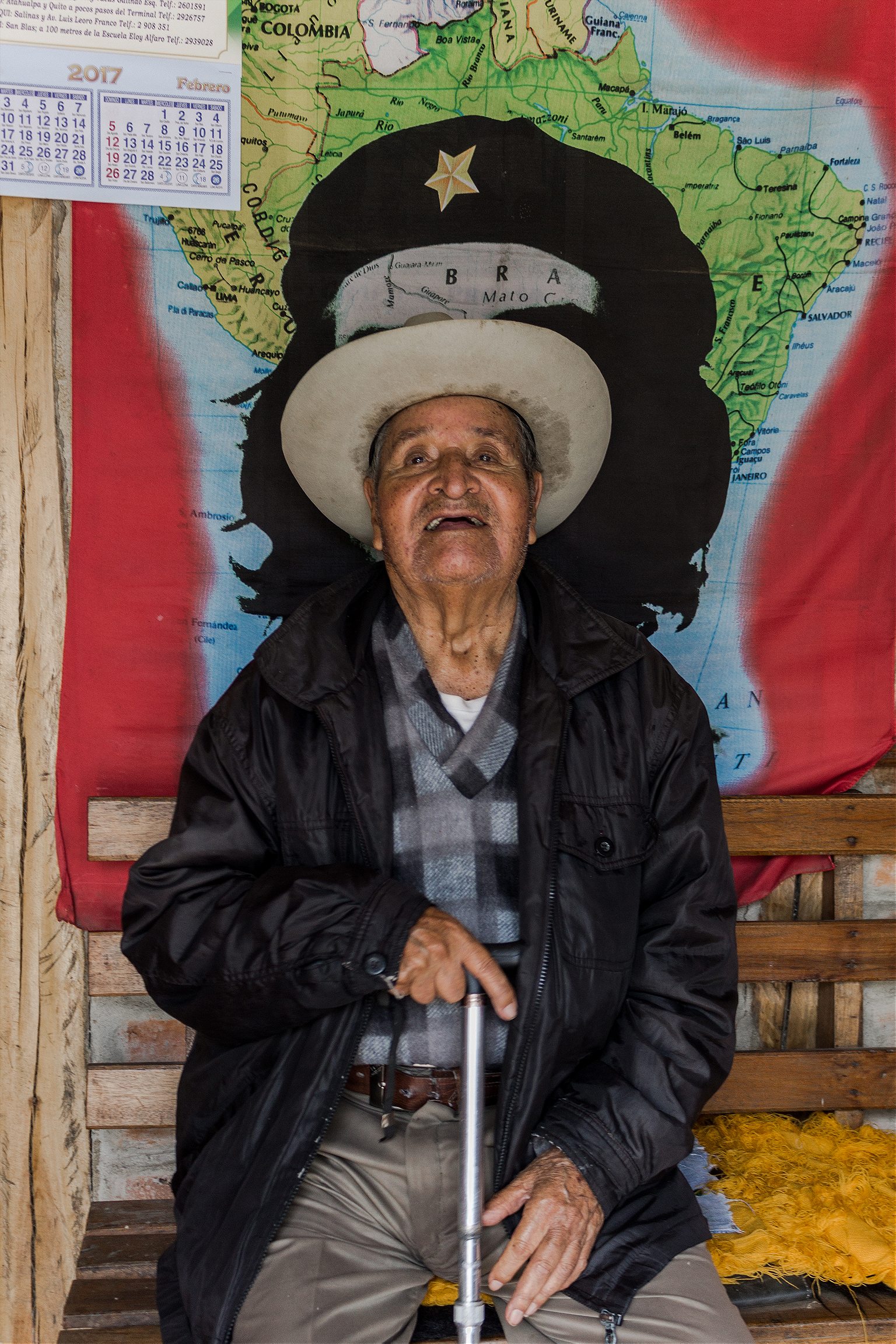
Jorge and Hernando were the first to glimpse into their property’s past. As kids, they would slide on banana leaves off the back of what they then called the “Big Mound,” an area of the plateau now known as the “Sun Temple.” One day, when they were 17 and 21 respectively, the brothers were at the entrance of the pyramid site, flattening reeds to make rope, when they hit a ceramic bowl. Other finds followed. Every now and then, when toiling on the land or exploring in the fields, they would uncover clustered artifacts. On one occasion, Jorge pulled out a meteorite, he says.
This is one of roughly 7,000 known archaeological sites in Ecuador that rest on private land. In the place of proper excavations—a modest but quality dig could come at $30,000—the government of Ecuador distributes manuals to families on how to care for national cultural patrimony. As a result, it is often the people, not the government, that serve as guardians of the past in places like Intag. But for the Pereira siblings, the prospect of outside interest and tourism has thrown up challenges and potential opportunities for the land not foreseen when their father first arrived at the plateau.
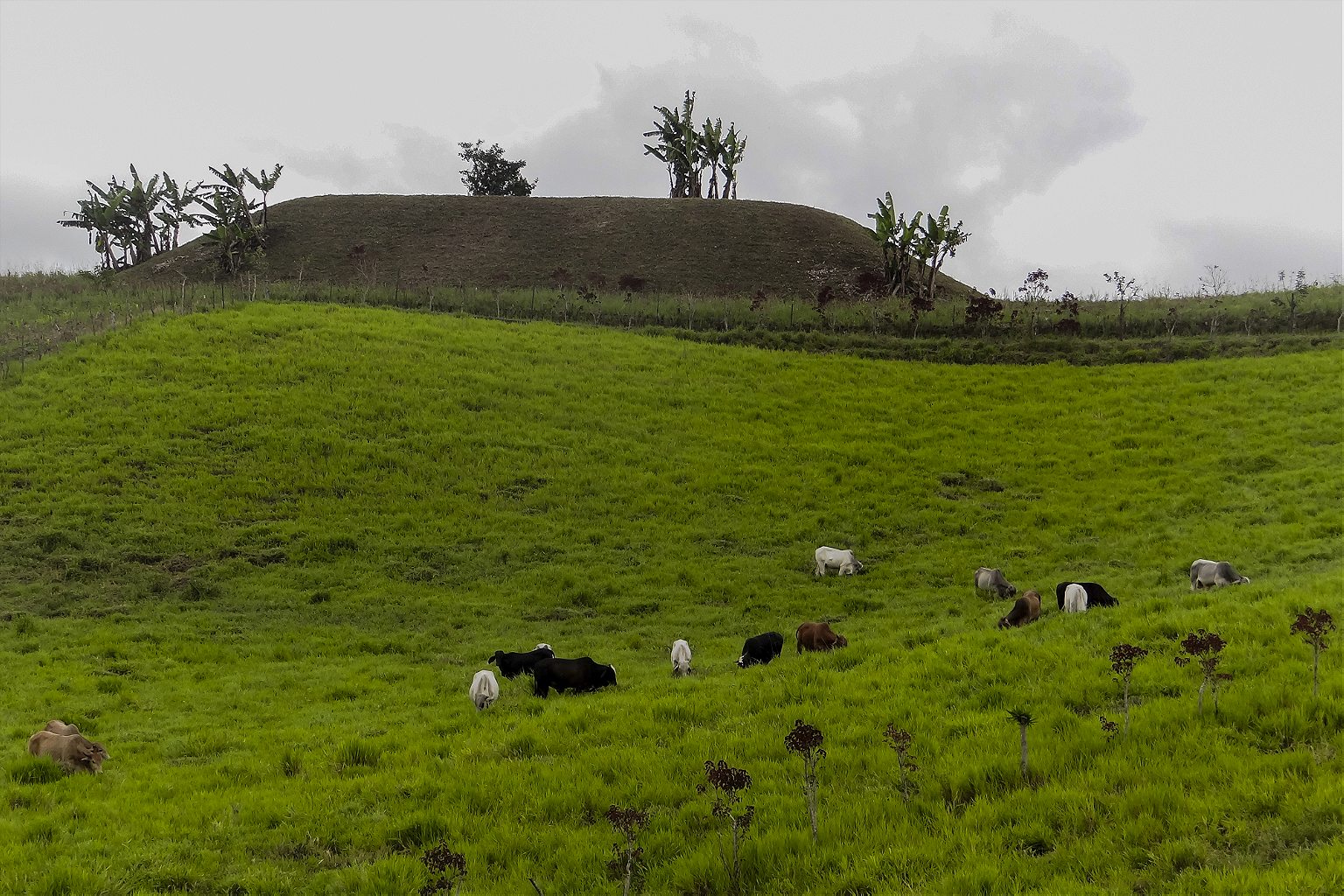
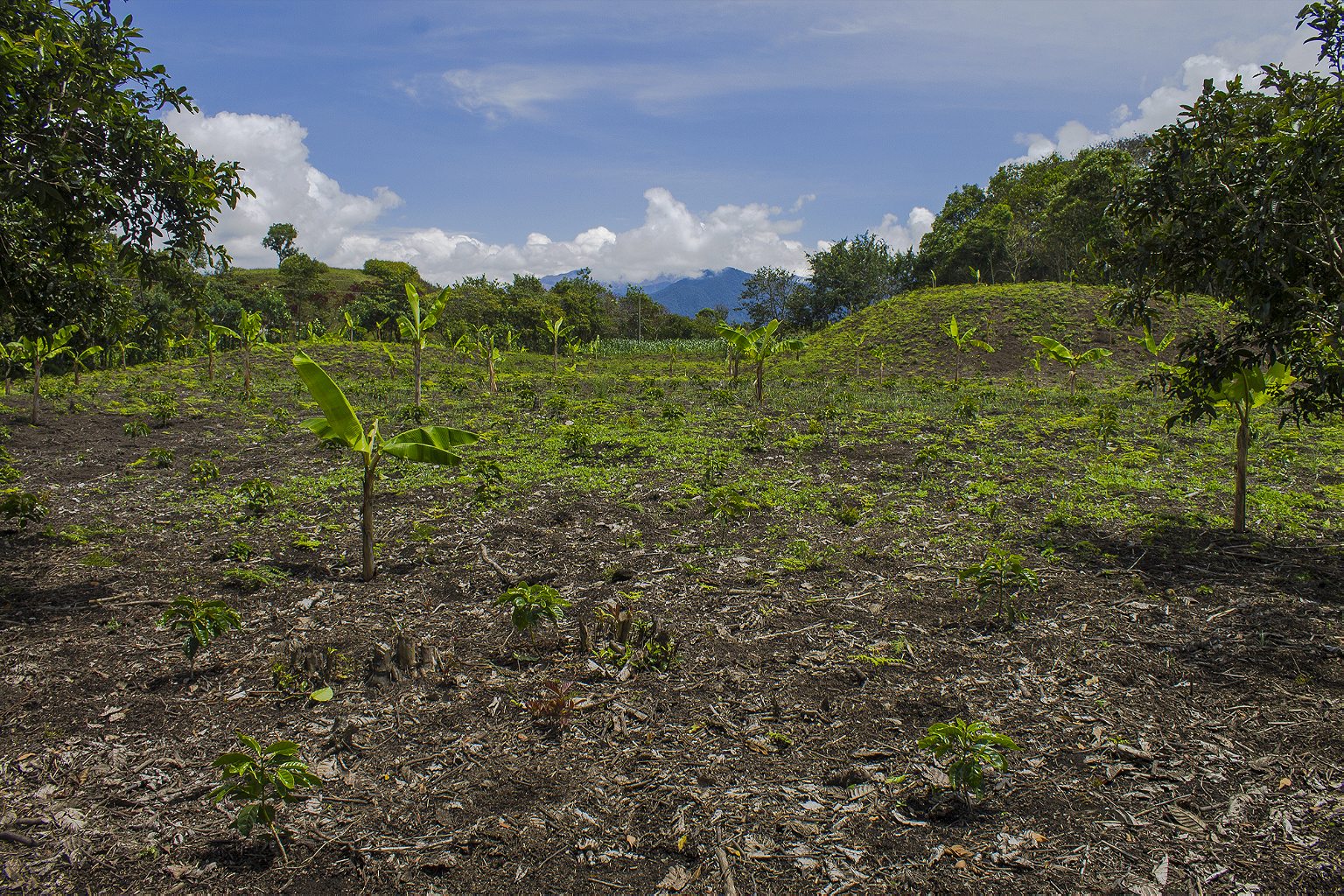
Jorge is giddy and friendly but can flash a fiery side should anyone encroach on the property. Hernando, seemingly always in a Che Guevara shirt, has a hunch, a mustache, and a relaxed smile. Hernando tells of a recurring dream he has that the ancient occupiers of the land, crowned with feathers and bearing musical instruments, tell him he’s their guardian.
“I’m a professional,” he adds as a caveat, before admitting he believes the visions are real. “I must fill that function.” Both brothers see their roles as guardians as a cause, like economic justice and rainforest conservation, for which to live.
Romel listens, but to him the relationship with the land is even more special. While his siblings were born in a village away from the site that has since disappeared, he was the only one born on the plateau. He explained that in his teens he developed an obsession for collecting artifacts: “I always enjoyed finding a pot before coming home for dinner.”
But when he left for university in Ibarra, he assumed he would not return. Ecuador’s financial crisis of 1999, in which millions lost their deposits as banks closed their doors, led Romel to Barcelona in search of a job. He spent the next seven years in Spain, toiling as a cashier in a department store.
But the plateau and a desire to return were never far from his mind. Two now ex-wives refused to live in Intag, and he says that his grown children never visit, but Romel returned and says he will now never abandon the land again.
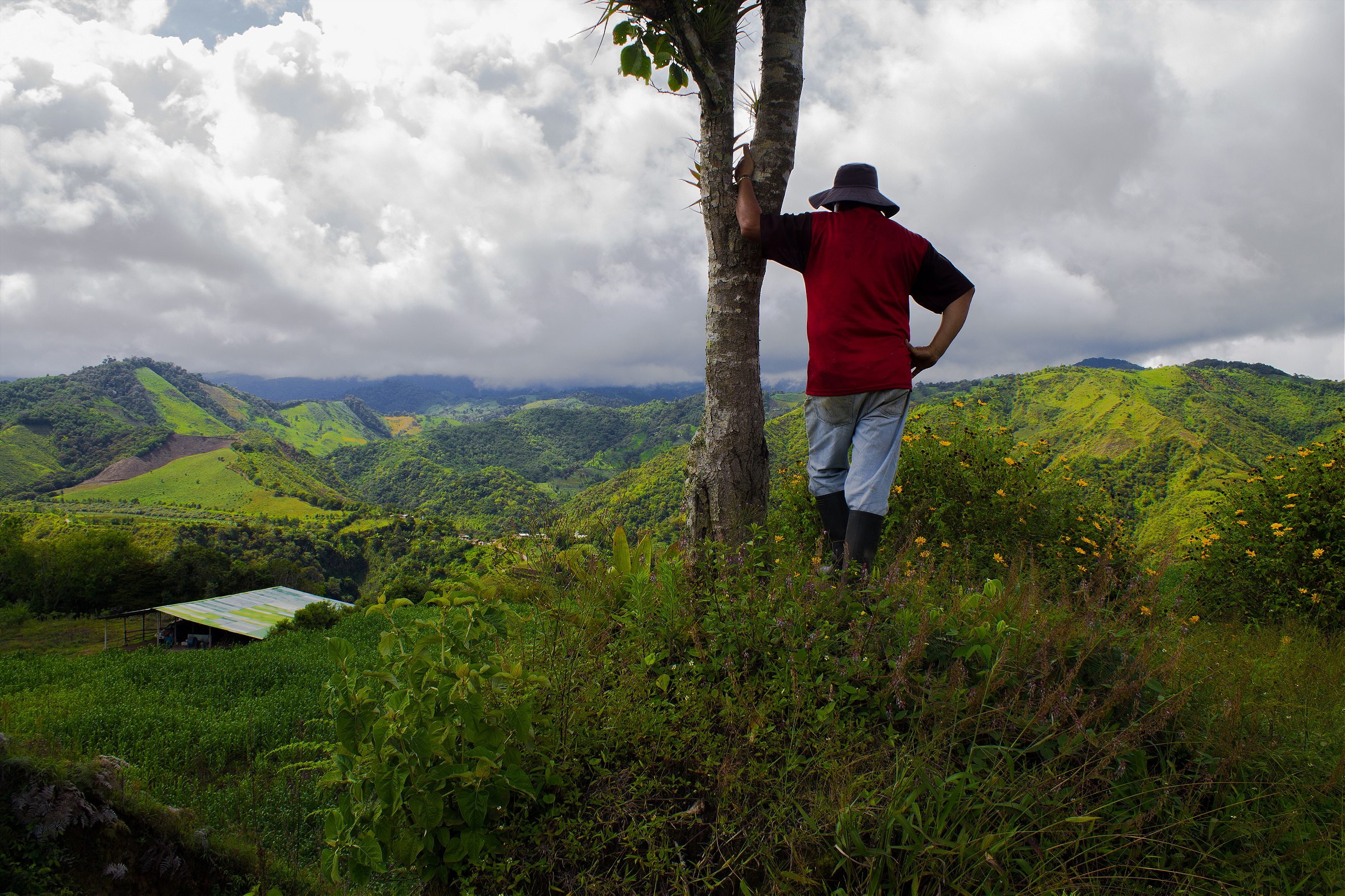
He also suggests that as the only brother who has picked up a book on archaeology, he is the only one who values the history of the plateau, which he named Wariman, or “Morning Star”—Gualiman in official documentation—after a shaman said he had a vision of a star above the Sun Temple one morning.
From above, the plateau resembles a long and empty trough, a rare geological formation with steep drops on all sides. The largest pyramid is the one the family calls the Sun Temple. Dozens of pyramids, tombs, and houses surround it, some sitting on platforms cut into the hard rock, most concentrated on the back side of the Sun Temple toward the west. Romel notes that they all face the rising sun.
Unlike the pyramids of Mexico or Peru, the structures were constructed of volcanic clay, sensitive to the sun and the rain. The passing centuries have packed the ruins with dirt and lush greenery, converting them into bumps in the smooth landscape. Similar shapes, but more dispersed, populate all of Intag.
The Sun Temple has a cavity across nearly half of its top from the first known expedition to Wariman. Jacinto Jijón y Caamaño, considered the father of Ecuadorian archaeology, dug in the 1930s, but his findings and writings on Wariman were lost, according to Romel.
The next study came half a century later. Concerned that Telmo might be gifting too many artifacts to his friends, Colombia del Carmen called the National Institute of Cultural Heritage, asking them to conduct an inventory and date the site. They estimated 1500 B.C.—likely 2,000 years off the actual date, later research would find.
Then a couple of years later, in 1984, two American anthropologists—including Stephen Athens, a rising star in the archaeology of Ecuador’s northern sierra—showed up. They brought with them the most advanced methods and tools of the time and stayed six months. Before leaving, Athens told the family that Wariman was probably built around 600 by the Caranquis, who traded between the coast and the Andes.
Romel, who has erected a mini museum and hotel on his father’s remaining plot, listens to visitors as they share insight or advice over the land, but he had never seen an archaeologist at work until April this year, when Estanislao Pazmiño came to the area.
A wide-eyed but serious professional, Pazmiño exchanged Che military hats with Hernando and historical factoids with Romel while surveying the land. While quizzing the brothers on objects he could be expected to find, Pazmiño pawed through the few dozen artifacts in Romel’s exhibition room, releasing an occasional yelp or nervous laugh when the discovery—what is suspected to be a ruby, a gold earring, an extinct variety of corn—hinted that this site held secrets yet to be uncovered.
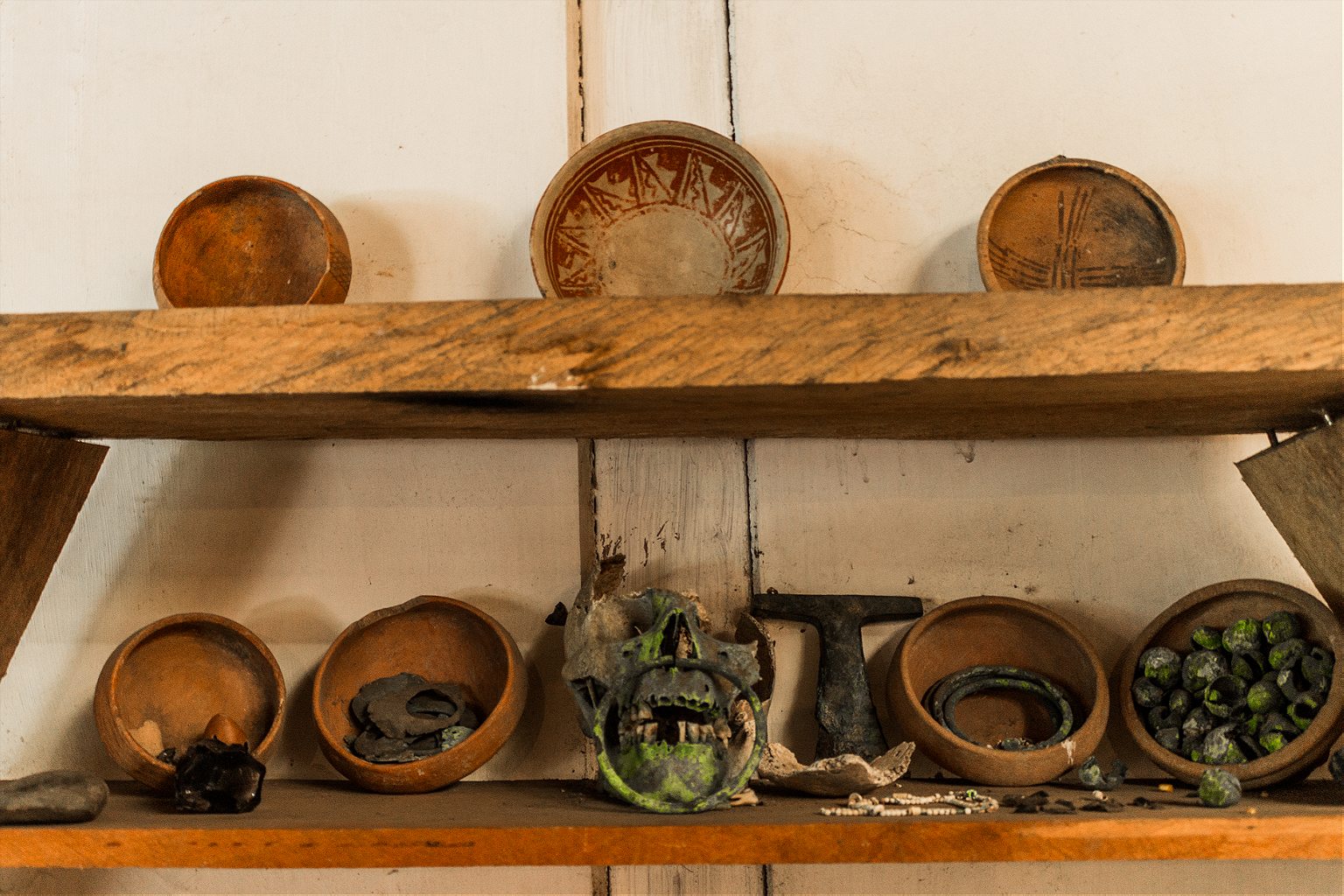
Pazmiño deducts from his daylong visit that the Caranquis, and possibly also the Yumbos, a civilization active at roughly the same time, inhabited Wariman from at least 300. The Caranquis are believed to have migrated from southern Colombia—like Telmo—and from what is now Ecuador, and were known for building pyramids. Wariman’s artifacts suggest the site was a frontier, peaceful, highly trafficked, and survived several phases of construction before Incan conquest. A pilgrimage site, most likely, says Pazmiño.
“They didn’t organize themselves in a capitalist way,” says Pazmiño, seemingly aiming his comment at Romel, who hypothesized that the plateau was divided by class. “But they did have hierarchy”: nobility, rulers, spiritual figures, and workers.
The ancient city was built in devotion to water. The central temple isn’t as high as Ecuador’s tallest, reaching an estimated 82 feet, but it is striking for its placement between two rivers and its sunken sides, which formed reflecting pools at the time. Sacred objects are also buried near a fountain at the west end of the plateau.
The Pereira brothers very much believe the site’s spiritual importance. They report sightings since they were little: shadows of three non-native pigs, a headless and tailless cobra, a camel climbing the Sun Temple.
The brothers also say that on three occasions a globe of bluish light hovered above the temple before disappearing over an area where the military subsequently found tombs and golden fish amulets. Shamans regularly show up, pulled, they say, by the energy of the place.
Pazmiño nods on hearing the brothers’ accounts. He explains that archaeologists from the region come prepared and ask permission from the ancestors before digging. They spill concentrated alcohol and puff tobacco into the sky to honor ancestors. “We tell them we’re doing it neither for money nor for ambition, but to know our predecessors.”
Romel adds that he does not ask permission; he says he is already acquainted with his forebears.
If I had been younger, I would have been like the Taliban, machine gun in hand.
But it is Wariman’s potential commercial worth, rather than its spiritual draw, that the Pereiras are most wary of. The brothers have received photographers, developers, broadcasters, anthropologists, researchers, park directors, and officials, each with ideas and propositions over the future of the land. Some, the brothers chased away with a shotgun straight away; others promised to return with funds and plans but never did.
Japanese surveyors from Mitsubishi came to Intag in 1990 to search for minerals. They found 12 of significance including gold, silver, and copper. Romel suspects they were tipped off by one of the studies that catalogued copper and gold ornaments. However, they were forced out by a local campaign, with Jorge on the front lines. “If I had been younger, I would have been like the Taliban, machine gun in hand,” he says. Chileans from the state-owned CODELCO mining company followed and are now wrapping up their exploration phase in Intag.
For the eldest two brothers, the incoming mines being developed in the region mark the end of Wariman. For Romel, however, the highways, traffic, and attention they bring might offer a beginning.
A marketer by trade and demeanor, he sells two visions: One is of conscientious tourism, replete with a guided museum tour and shamanic demonstrations. Visitors would trickle in only by word of mouth. The other vision is of an attraction of world-class rank, with an archeological park and the tallest and longest zip line in South America. With it would come employment for Intag’s poor residents, preventing the sort of outmigration that forced Romel to leave.
It was in pursuit of this ambitious plan that he returned from Spain, partly in honor of his mother, Maria Elena Varela, who he said had wanted to see tourists come to the site but died the year after her son arrived home.
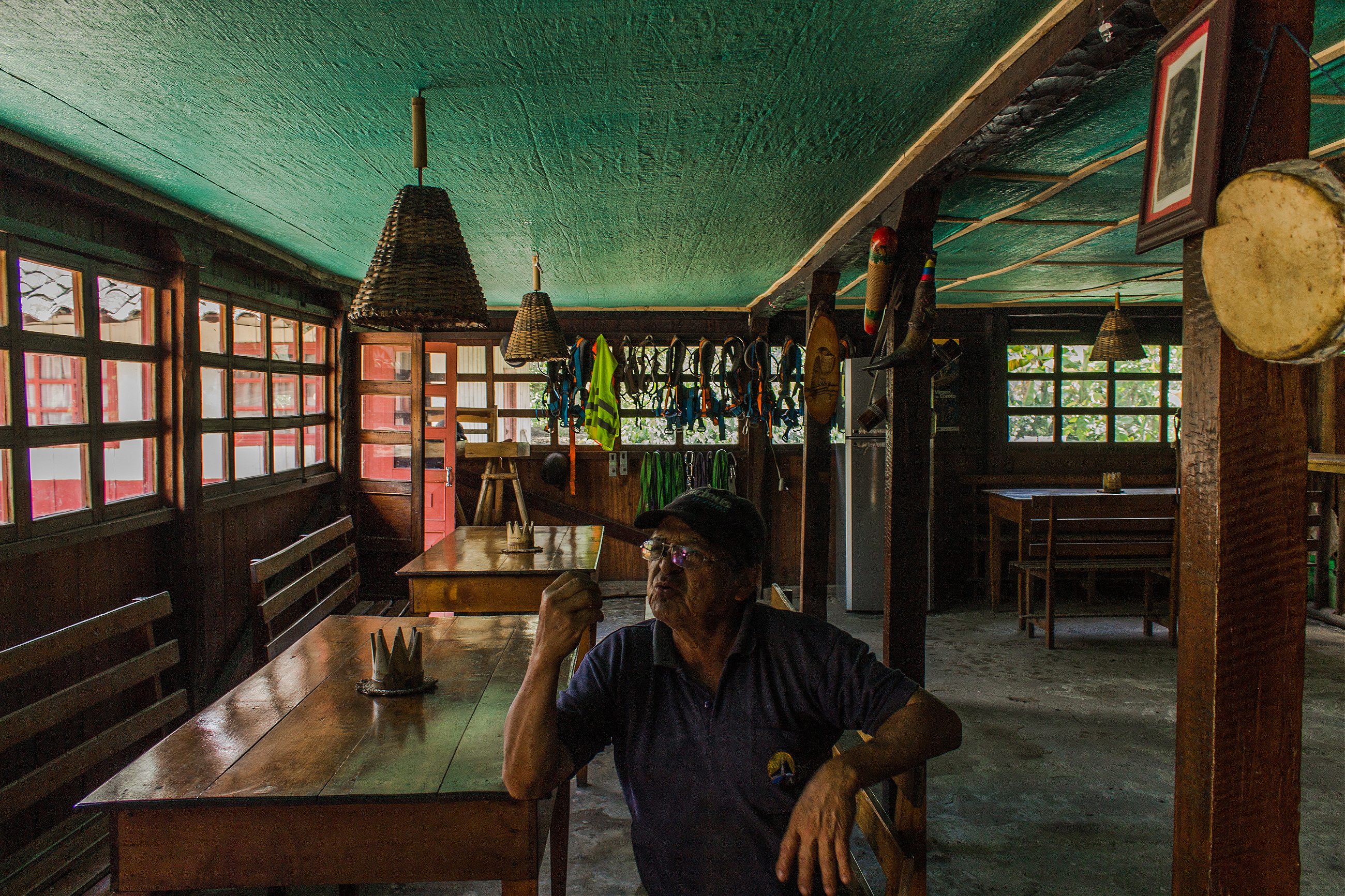
But on mention of digging tunnels next to the pyramids, connecting pipes from the waterfall across the valley, or building cabins near the tombs, Jorge cites their father. Not in his name, he says, will modernity destroy Wariman.
To avoid conflict, Romel decided to keep to his lot. Luckily for him, it includes many of the major attractions outside of land kept by their father, who, despite his advanced age, remains an important presence.
“I’m a part of the attraction,” Telmo says. Local chroniclers still come to pay their respects and ask him about the time he founded the first high school to serve his parish or paved the first road to Intag with then-President José María Velasco Ibarra.
Telmo is not yet a specter. He paces the halls of his small house and appears at the door to feel the sun on his face. To him, the temple has remained the “Big Mound.”
